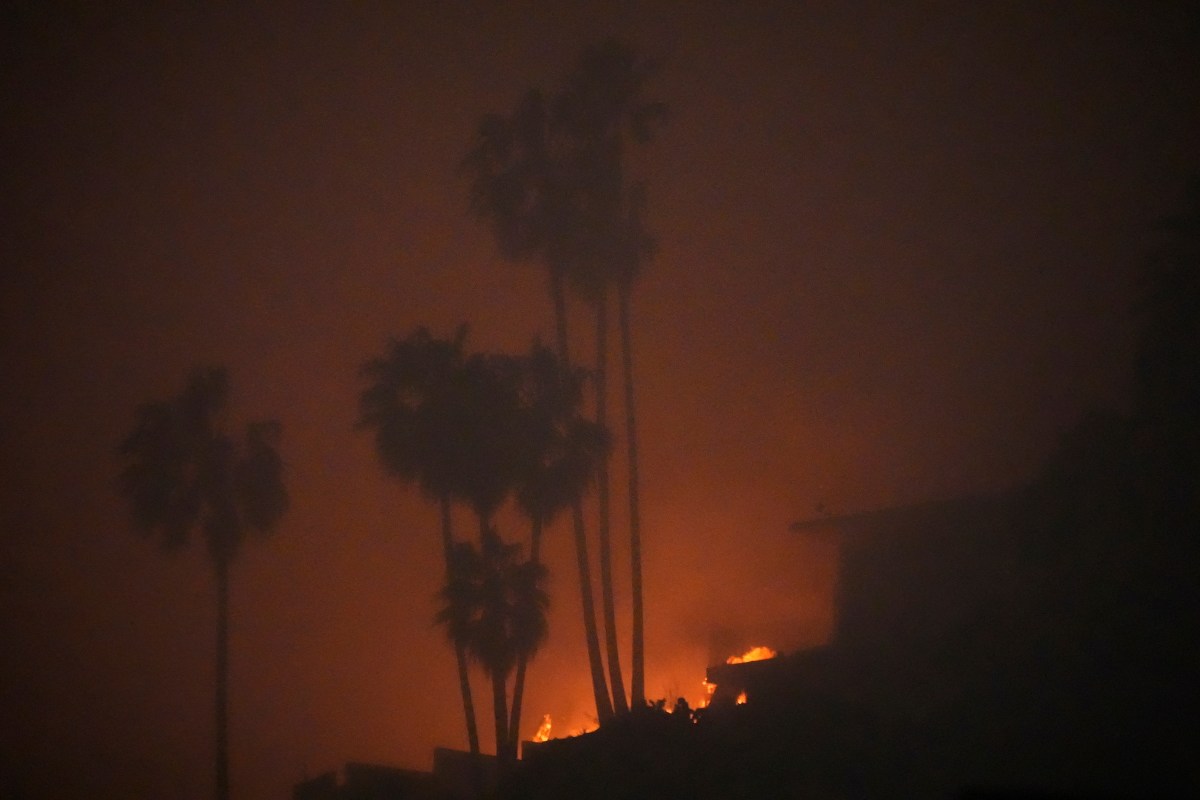Hollywood Hills on High Alert: Understanding the New Wildfire Threat
The Hollywood Hills are once again at the center of a wildfire crisis as a fresh blaze has erupted, leading to emergency evacuations and heightened anxiety among residents. This situation is a stark reminder of the challenges faced by this iconic area, where the interplay of natural beauty and urban living often puts communities at risk. Authorities are working tirelessly to monitor and control the situation, but the threat remains significant.
The Immediate Impact of the Wildfire
As the flames spread across the Hollywood Hills, local authorities have issued mandatory evacuation orders for several neighborhoods. Residents are urged to leave their homes immediately, prioritizing safety over possessions. The fire, fueled by dry conditions and strong winds, poses a serious risk to both life and property.
Emergency responders, including firefighters and local law enforcement, have mobilized quickly to manage the situation. However, the rugged terrain of the Hollywood Hills complicates firefighting efforts. Firefighters are employing aerial support, utilizing helicopters and air tankers to drop water and fire retardant in an effort to contain the flames.
- Evacuation Areas: Residents in areas such as Laurel Canyon, Runyon Canyon, and parts of Mulholland Drive have been particularly affected.
- Emergency Services: The Los Angeles Fire Department (LAFD) is leading the response, with support from state and federal resources.
The Science Behind Wildfires in Urban Areas
Understanding why wildfires are a recurring threat in the Hollywood Hills requires a look at the environmental factors at play. The region’s Mediterranean climate, characterized by wet winters and dry summers, creates ideal conditions for wildfires. The landscape is dotted with vegetation that can easily ignite, especially during prolonged dry spells.
Moreover, urban encroachment into these natural areas has increased the risk. Homes built close to brush-covered hillsides are particularly vulnerable. This creates a challenging dichotomy: the allure of living in a picturesque environment versus the real dangers posed by wildfires.
Preventive Measures and Community Preparedness
In light of the ongoing threat, community preparedness is more crucial than ever. Residents are encouraged to take proactive measures to protect their homes and families. Some key strategies include:
- Defensible Space: Clear vegetation and flammable materials from around homes to create a defensible space.
- Emergency Kits: Prepare emergency kits that include essentials such as food, water, medications, and important documents.
- Stay Informed: Keep abreast of local news and alerts regarding fire conditions and evacuation orders.
Local authorities also conduct community workshops to educate residents on wildfire preparedness. These sessions often cover topics such as evacuation routes, emergency contacts, and the importance of having a communication plan in place.
The Role of Technology in Fire Management
Technology plays an increasingly vital role in managing wildfires and protecting communities. Real-time data collection and analysis help fire management teams make informed decisions. Drones equipped with thermal imaging can assess fire hotspots, allowing for targeted firefighting efforts.
Additionally, social media platforms and mobile apps enable authorities to disseminate information quickly, ensuring that residents are kept up to date on the latest developments. The use of predictive modeling can also help anticipate fire behavior based on weather conditions, allowing for better resource allocation.
Looking to the Future: Environmental Considerations
As climate change continues to alter weather patterns and increase the frequency of extreme weather events, the threat of wildfires in urban areas like Hollywood Hills is expected to grow. Experts emphasize the need for sustainable land management practices and community resilience strategies.
Initiatives such as controlled burns and vegetation management can help reduce the amount of fuel available for wildfires. Moreover, urban planning must take into account the risks associated with living near wildland areas, prioritizing safety and sustainability.
Community Response and Resilience
The community’s response to the current wildfire threat showcases the resilience of Hollywood Hills residents. Neighbors are banding together, offering support to those who have been evacuated, providing shelter, and sharing resources. This sense of community is vital in times of crisis, fostering hope and solidarity among residents.
Additionally, local organizations and non-profits are mobilizing to assist those affected by the fire. From providing meals to offering mental health support, these groups play an essential role in helping the community recover.
Conclusion: A Call for Vigilance and Preparedness
The wildfire situation in the Hollywood Hills serves as a crucial reminder of the vulnerabilities faced by communities situated near wildland areas. While the immediate threat demands urgent action and response, it also calls for long-term strategies to mitigate risks and enhance community preparedness.
As authorities continue to battle the flames, residents are urged to remain vigilant, informed, and prepared. The path forward involves not only addressing the current crisis but also fostering a culture of resilience and proactive engagement in wildfire management.
In the face of adversity, the people of Hollywood Hills demonstrate an unwavering spirit, showcasing their commitment to protecting their homes and each other. Together, they stand ready to confront the challenges posed by wildfires, ensuring that their beloved community remains a safe and vibrant place to live.
See more CNN Headline



